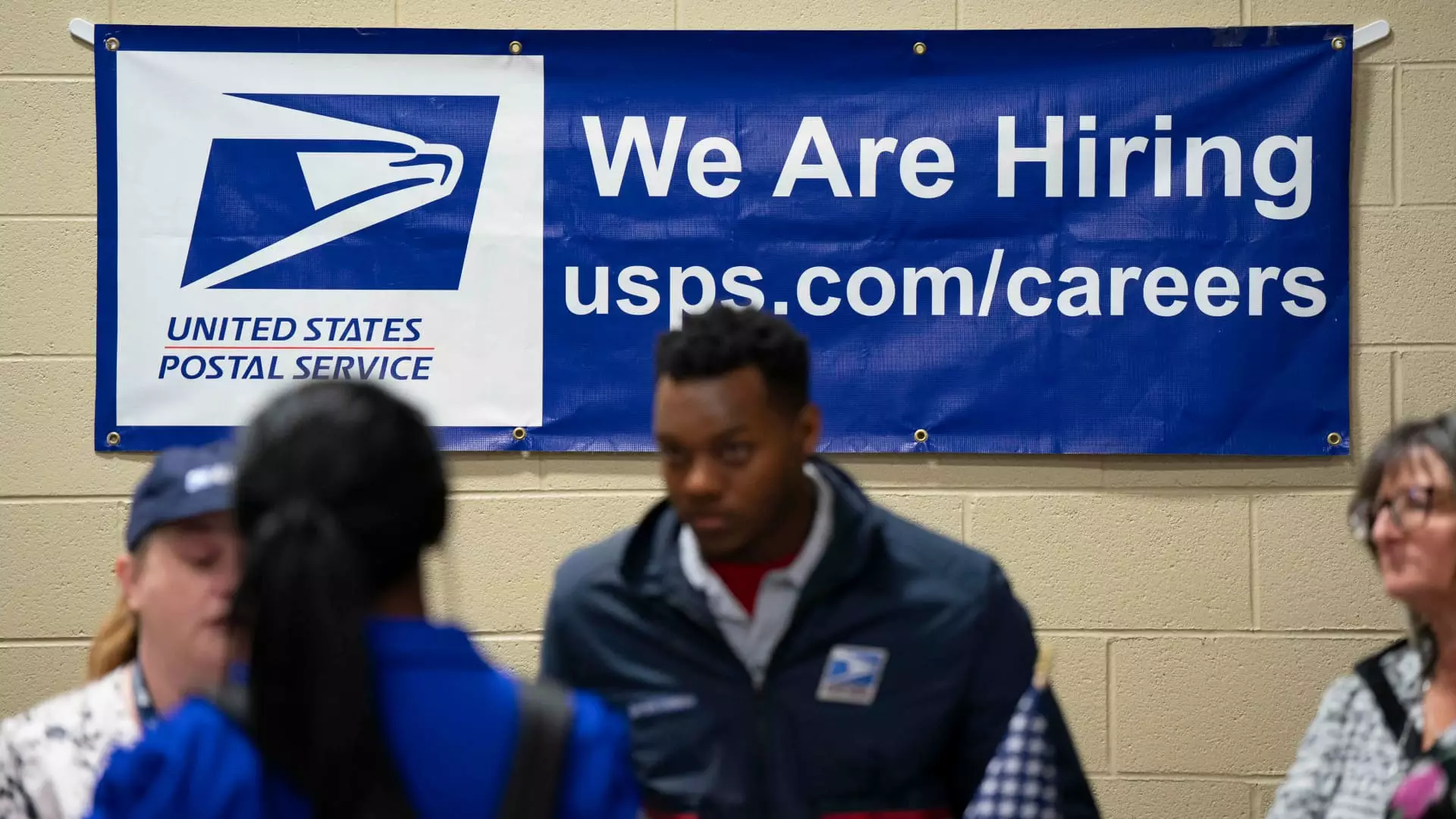The latest report from the Bureau of Labor Statistics reveals a mixed bag, casting a shadow on America’s supposed economic strength. While job creation appears somewhat stable, the reality is far more nuanced. Employment figures reflect a mere uptick of 139,000 nonfarm payrolls in May, surpassing Dow Jones predictions but still falling short of what one would hope to see in a thriving economy. At a glance, one might interpret these numbers as a sign of resilience; however, a deeper investigation unveils troubling underlying issues that cannot be ignored.
The unemployment rate remains steady at 4.2%, a figure that seems reassuring on the surface. This number, however, belies deeper systemic challenges facing many workers. The broader measure of unemployment, which includes those disheartened and underemployed, stands at 7.8%—a stark reminder that not all is well within the labor market. With half of the job growth attributed to the health care sector, one cannot help but question whether this is truly a reflection of economic vitality or merely a sign of an economy grappling with an aging population and increased health care demands.
The Hidden Dangers of Job Growth
While sectors like leisure, hospitality, and social assistance contribute positively to the employment landscape, the losses in government jobs—22,000 this month alone—signal an alarming trend. The current administration’s concerted efforts to downsize the federal workforce, couched in rhetoric about efficiency, may yield short-term fiscal gains but perilously neglect the long-term needs of a country dependent on these services. This situation raises a pivotal question: At what cost are these job cuts being made, and who bears the brunt of these fiscal decisions?
Moreover, the downward revisions of previous months’ job gains, a shocking 30,000 for April and an eye-watering 65,000 for March, paint a grim picture of an economy prone to volatility. While the upward trend in average hourly earnings—up 0.4% for May, and 3.9% year-over-year—is commendable, it cannot cloud the disconcerting reality of full-time job losses—623,000 in the last month. Instead of celebrating modest wage growth, should we not be questioning the broader implications of an economy with shrinking full-time employment opportunities?
The Tariff Conundrum
As the backdrop of this employment report looms the specter of tariffs, the instinctual response from various market sectors has been one of anxiety. These tariffs, driven by a desire to level the playing field for American goods, instill fear among consumers and business owners alike. Each increase raises the tension surrounding inflation and could potentially strike at the heart of consumer spending, the backbone of the American economy.
The Federal Reserve is cautiously observing these developments, with expected policy stasis on interest rates. While this strategy might offer short-term stability, the looming threat of tariff-induced inflation is a ticking time bomb that could explode in the face of policymakers unprepared for such pressures. If the economy is already feeling strain from these protective measures, what will happen when inflation spikes? The eventual fallout could reverberate throughout the job market, ultimately leading back to job losses, particularly in those sectors that rely heavily on international supply chains.
Sentiments of Uncertainty
Consumers and business leaders face growing anxiety, indicative of an economy teetering on the edge. The psychological impact of such uncertainty can be profound—it can stifle spending and contribute to a downward spiral of economic activity. As confidence wanes, we may find ourselves not far from a recession despite the façade of growth generated by a seemingly healthy job market.
In this light, it is imperative to treat this employment report with the skepticism it so rightly deserves. The job market may appear to stand tall, yet beneath the surface lies a complex and fragile web of factors that could easily unravel. Indeed, if one does not heed the warnings of economists like Daniel Zhao, who wisely cautioned against resting too easily on this chronicled data, we may soon find that our perceived vitality in the labor market is but a mirage in a desert of economic insecurity. The question now looms: how much longer can this illusion be sustained before the inevitable truth comes crashing down?

